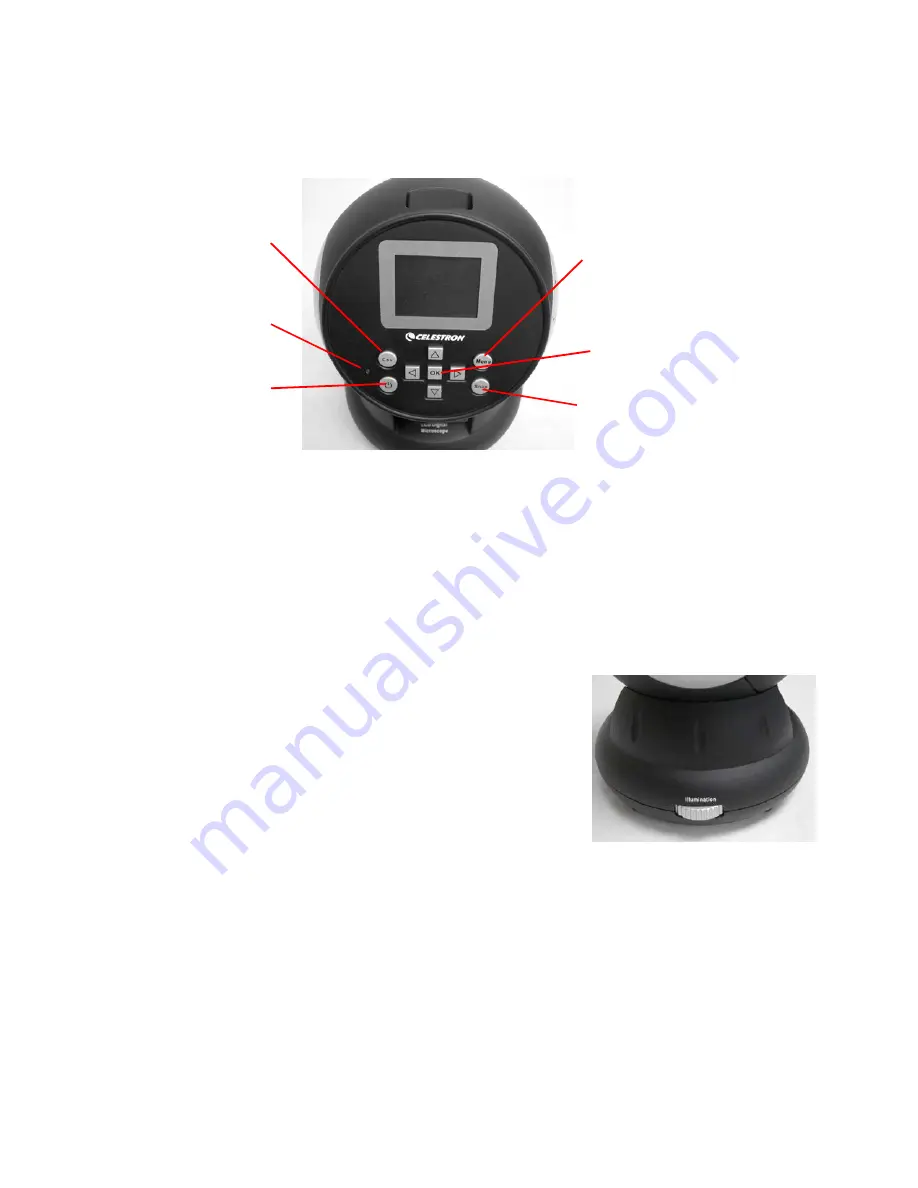
4
Microscope Operation
Before looking at slide specimens you must remove the protective cover over the LCD screen, turn the LCD on, turn on the illuminator,
and understand how to use the slide holder and then you are ready to begin viewing.
Figure 4
LCD Module
This digital microscope is different than traditional microscopes --- instead of using eyepieces to look at a specimen in a traditional
microscope, the LCD monitor replaces the eyepieces so you can look at the specimen on the screen by yourself or share the views with
others. To begin to view specimens with your microscope, you will have to turn the LCD monitor on by turning the Power Button “On”
(see Figure 4). Push the button once and shortly the Monitor On LED (red color) will come on indicating the LCD monitor is “On”.
That is basically all you need to do to use the LCD screen for viewing specimens. The various keys on the LCD Module are mainly used
for taking images (snapshots and video) and will be discussed later in this manual.
Illumination
1.
To turn the illuminator on, see Figure 5 below and turn the control dial to the left.
2.
The illuminator is used for specimen slides where the light shines up through the hole
in the stage through the slide.
3.
Rotate the illuminator dial to the brightness level desired when viewing specimens.
Adjusting the Lighting
Specimens of different size, thickness, and color variations will require different levels of illumination. There are two ways to change the
amount of illumination when viewing a specimen; adjusting the brightness on the dial shown above in Figure 5 and changing the EV
function on the LCD monitor. The EV (exposure value for brightness) function increases or decreases the brightness level by using the
Left and Right arrow keys on the LCD monitor.
When viewing a specimen that is not transparent or dark in color, you may need to increase the amount of light to resolve certain features
or details. This is best done by simply increasing the brightness of the illuminator by rotating the brightness control dial all the way to its
highest setting.
Optimum lighting will be found by experimenting with adjustments as each specimen may require slightly different illumination as well
as the same specimens viewed under different powers.
ESC (Change) Key
Monitor On LED
Power On/Off
Button
Menu Key
Direction/OK Keys
Snap Key
Figure 5





































